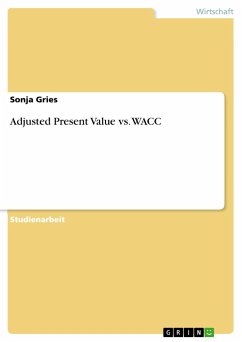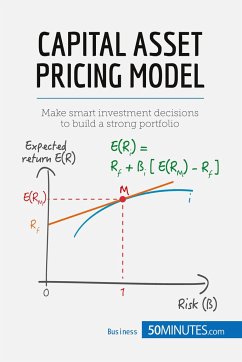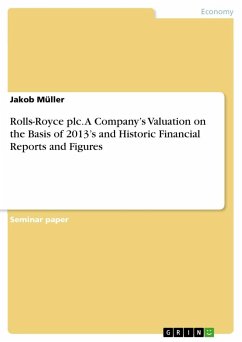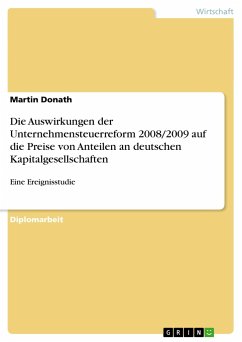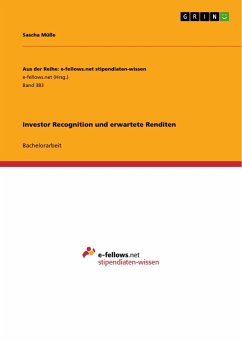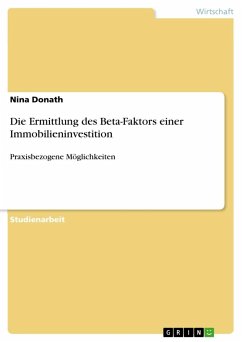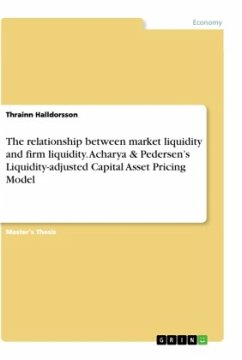
The relationship between market liquidity and firm liquidity. Acharya & Pedersen's Liquidity-adjusted Capital Asset Pricing Model
Versandkostenfrei!
Versandfertig in 1-2 Wochen
47,95 €
inkl. MwSt.

PAYBACK Punkte
0 °P sammeln!
Master's Thesis from the year 2017 in the subject Business economics - Investment and Finance, grade: 12, Copenhagen Business School, language: English, abstract: This thesis investigates the role of firm liquidity in asset pricing and how well time-varying corporate events are included in commonly used liquidity measures such as Amihud's illiquidity (ILLIQ) proxy and asset pricing models such as Acharya and Pedersen's Liquidity-adjusted Capital Asset Pricing Model (L-CAPM). The subject is motivated by the L-CAPMs inherent methodological focus on static measures of market liquidity used for po...
Master's Thesis from the year 2017 in the subject Business economics - Investment and Finance, grade: 12, Copenhagen Business School, language: English, abstract: This thesis investigates the role of firm liquidity in asset pricing and how well time-varying corporate events are included in commonly used liquidity measures such as Amihud's illiquidity (ILLIQ) proxy and asset pricing models such as Acharya and Pedersen's Liquidity-adjusted Capital Asset Pricing Model (L-CAPM). The subject is motivated by the L-CAPMs inherent methodological focus on static measures of market liquidity used for portfolio pricing which are likely to disregard some aspects of time-varying corporate events relevant for individual securities.An event study was setup to investigate the effects of Facebook's share repurchase and McDonald's debt issue on liquidity, measured by the ILLIQ proxy, and asset prices, measured by the L-CAPM. While the ILLIQ proxy significantly captures a price impact on event day,the level of abnormal firm illiquidity is variant throughout the event window and susceptible to appropriate measures of average illiquidity. The results also show that the liquidity impact of the events is not significantly captured by the L-CAPM, in addition to the model being slightly outperformed by the standard CAPM. The findings suggest that the L-CAPM struggles to capture the firm liquidity effects of corporate events, possibly due to the model's reliance on static measures of market liquidity on portfolio level rather than considering the effects of time-varying firm liquidity events for individual securities.However, the simplistic setup of the event study has limitations, which only allow for narrow interpretation the relationship between market liquidity and firm liquidity and asset prices. Further research is needed on robust liquidity proxies designed to capture firm liquidity, the additive nature of illiquidity costs and possible modifications on asset pricing models to better account for the time variance of liquidity.




